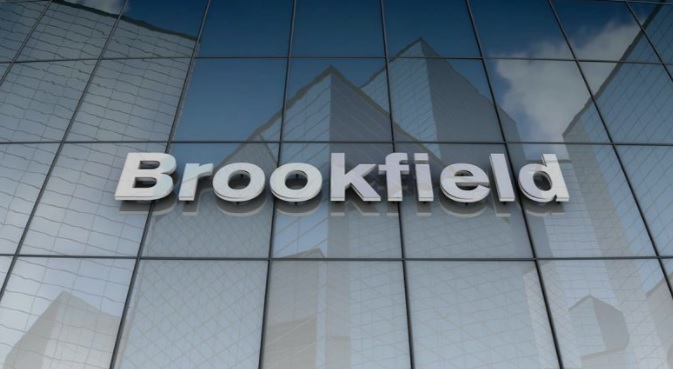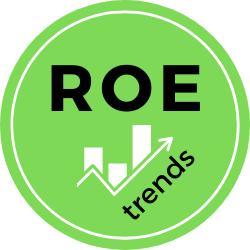Brookfield Asset Management Stock Analysis A Deep Dive into the Alternative Asset Giant

Company Overview
Brookfield Asset Management Inc. (BAM) is a leading global alternative asset manager, renowned for its focus on real assets such as real estate, infrastructure, renewable power, and private equity. Established in 1899 as Brascan Limited, Brookfield has grown into one of the most influential firms in the alternative investment sector. With operations in over 30 countries and managing nearly $1 trillion in assets by 2024, the company’s market dominance is clear.
This Brookfield Asset Management stock analysis will provide an in-depth evaluation of the company’s financial performance, growth prospects, strategic priorities, and competitive position within the evolving investment landscape.
Market Capitalization and Shareholder Composition
Brookfield Asset Management is publicly traded on the New York Stock Exchange (NYSE) and the Toronto Stock Exchange (TSX), giving investors easy access to its shares. The company is backed by a variety of institutional investors, including The Vanguard Group, BlackRock, and Royal Bank of Canada. As of 2024, Brookfield’s market capitalization exceeds $90 billion, reflecting strong investor confidence and a robust financial standing.
Mission and Vision
- Mission: “To be the world’s leading alternative asset manager.”
- Vision: Brookfield aims to generate superior long-term returns by investing in high-quality assets and managing them with operational excellence, all while prioritizing sustainability.
In this Brookfield Asset Management stock analysis, we’ll explore how the company’s mission and vision translate into strong financial outcomes for shareholders and investors.
Financial Performance: A Core Pillar of Success
A key component of any Brookfield Asset Management stock analysis is assessing the company’s financial performance. Brookfield has consistently demonstrated strong revenue growth, expanding its Assets Under Management (AUM) and Fee-Related Earnings (FRE) over the years. The following breakdown of Brookfield Asset Management financial metrics offers insight into the company’s stability and growth trajectory.
Revenue and AUM Growth
Over the last decade, Brookfield has seen impressive growth in both revenue and AUM, driven by its diversified investment approach. The company’s AUM has skyrocketed, surpassing $900 billion in 2024, a clear indication of its ability to scale its operations while maintaining high-quality investments.
| Year | Revenue ($B) | Fee-Related Earnings ($B) | Funds from Operations ($B) | AUM (Trillions) | ROE (%) |
| 2014 | 1.35 | 0.45 | 0.55 | 0.20 | 12.8 |
| 2015 | 1.50 | 0.50 | 0.60 | 0.23 | 13.5 |
| 2016 | 1.70 | 0.60 | 0.70 | 0.26 | 14.2 |
| 2017 | 2.00 | 0.70 | 0.85 | 0.30 | 15.5 |
| 2018 | 2.30 | 0.80 | 1.00 | 0.35 | 16.8 |
| 2019 | 2.70 | 0.95 | 1.15 | 0.40 | 18.1 |
| 2020 | 3.00 | 1.10 | 1.30 | 0.45 | 19.5 |
| 2021 | 4.80 | 1.80 | 2.20 | 0.68 | 26.1 |
| 2022 | 5.50 | 2.10 | 2.60 | 0.78 | 28.5 |
| 2023 | 6.30 | 2.50 | 3.00 | 0.85 | 30.2 |
| 2024 (TTM) | 7.00 | 2.80 | 3.40 | 0.90 | 31.5 |
This Brookfield Asset Management stock analysis reveals a consistent upward trend in the company’s AUM, revenue, and FRE over the past 10 years. Between 2021 and 2024, the company’s performance saw a notable acceleration, driven by Brookfield’s strategic investments in renewable power and infrastructure.
Fee-Related Earnings (FRE) and Funds from Operations (FFO)
Brookfield’s focus on increasing its Fee-Related Earnings (FRE) has been a major factor in its ability to maintain steady, predictable cash flows. This approach has contributed to Brookfield Asset Management financial strength, especially in the face of market volatility. Additionally, the company’s Funds from Operations (FFO), an important metric for real estate and infrastructure investments, has consistently grown, providing Brookfield with a solid financial foundation for reinvestment and growth.
Strategic Focus: Sustainable and Essential Investments
This Brookfield Asset Management stock analysis emphasizes the company’s strategic focus on investing in sustainable and essential assets that will generate long-term returns. Brookfield’s diverse asset base includes real estate, infrastructure, renewable energy, and private equity, all of which are designed to weather economic fluctuations while generating long-term value.
Key areas of focus for Brookfield include:
- Real Estate: Investing in diverse property sectors such as office, retail, multifamily, and industrial properties.
- Infrastructure: Expanding into essential assets, including utilities, transportation, and digital infrastructure.
- Renewable Energy: Growing its portfolio of wind, solar, hydro, and energy storage projects to capitalize on the global transition to clean energy.
- Private Equity: Focusing on high-growth private companies with strong operational improvement potential.
SWOT Analysis: Brookfield’s Position in the Market
In this Brookfield Asset Management stock analysis, a SWOT analysis helps evaluate the company’s position within the broader market:
- Strengths:
- Strong track record in managing real assets and delivering consistent revenue growth.
- Global presence, providing access to diverse investment opportunities.
- Expertise in sustainable investments, which align with current trends in environmental, social, and governance (ESG) considerations.
- Weaknesses:
- Exposure to market fluctuations: Brookfield’s performance can be impacted by economic slowdowns or market volatility.
- High fees in certain asset classes may deter some investors.
- Dependence on capital raising to sustain growth in certain segments.
- Opportunities:
- The alternative investment industry continues to grow as demand for diversification increases among institutional investors.
- Expansion into emerging markets, where infrastructure and renewable energy investments are booming.
- Brookfield’s strong ESG focus could help it capture market share in a growing sector.
- Threats:
- Economic slowdowns or recessions could negatively affect investor sentiment.
- Market volatility may undermine performance-based earnings.
- Regulatory changes in global markets could increase operational risks.
Competitive Landscape: Brookfield’s Peers in the Industry
This Brookfield Asset Management stock analysis also examines the competitive environment in which Brookfield operates. Brookfield competes with several other industry giants in the alternative investment space:
- Blackstone: The largest alternative asset manager globally, with a massive presence in private equity and real estate.
- KKR & Co. Inc.: A key player in private equity, infrastructure, and real estate.
- Apollo Global Management: Specializes in private equity and credit investments.
Brookfield differentiates itself through its focus on real assets and its long-term, value-oriented investment approach. These elements set it apart from competitors and strengthen its position in the marketplace.
Key Projects and Future Outlook
Looking forward, Brookfield Asset Management stock analysis highlights key initiatives that are shaping the company’s growth prospects:
- Renewable Power Expansion: Brookfield continues to invest in wind, solar, hydro, and energy storage projects.
- Infrastructure Investments: The company is targeting investments in digital infrastructure and renewable energy assets to align with global sustainability trends.
- Private Equity: Brookfield will continue to seek out high-growth private companies across various sectors.
As these projects move forward, Brookfield’s strong financial position will likely support its continued expansion into emerging and essential asset classes, driving future growth.
Financial Analysis and Valuation
In any Brookfield Asset Management stock analysis, it’s important to consider key financial metrics such as Revenue Growth, AUM growth, Profitability, and Valuation Ratios. A detailed evaluation of Brookfield Asset Management financial performance is necessary to gauge its valuation relative to competitors in the alternative asset management industry.
Key ratios such as Price-to-FFO (P/FFO) and Dividend Yield offer valuable insights into Brookfield’s investment appeal. Given its solid financial track record and strong market presence, Brookfield remains a highly attractive investment for long-term investors seeking exposure to real assets and alternative investments.
Conclusion
In conclusion, Brookfield Asset Management stock analysis reveals that the company remains a leading player in the alternative asset management sector. With strong financial performance, a commitment to sustainable investing, and a strategic focus on real assets and infrastructure, Brookfield is poised for continued growth. Investors seeking long-term value should closely monitor Brookfield Asset Management stock analysis reports and financial trends as the company navigates an increasingly competitive landscape.
By understanding Brookfield Asset Management financial performance and strategic direction, investors can make informed decisions regarding the company’s stock and its potential to deliver attractive returns in the future. We recommend that you check the data in this article on the Brookfield Asset Management investor relations web page.

